Search form
- Speaking exams
- Typical speaking tasks

Oral presentation
Giving an oral presentation as part of a speaking exam can be quite scary, but we're here to help you. Watch two students giving presentations and then read the tips carefully. Which tips do they follow? Which ones don’t they follow?
Instructions
Watch the video of two students doing an oral presentation as part of a speaking exam. Then read the tips below.
Melissa: Hi, everyone! Today I would like to talk about how to become the most popular teen in school.
Firstly, I think getting good academic results is the first factor to make you become popular since, having a good academic result, your teacher will award you in front of your schoolmates. Then, your schoolmates will know who you are and maybe they would like to get to know you because they want to learn something good from you.
Secondly, I think participating in school clubs and student unions can help to make you become popular, since after participating in these school clubs or student union, people will know who you are and it can help you to make friends all around the school, no matter senior forms or junior forms.
In conclusion, I think to become the most popular teen in school we need to have good academic results and also participate in school clubs and student union. Thank you!
Kelvin: Good evening, everyone! So, today I want to talk about whether the sale of cigarettes should be made illegal.
As we all know, cigarettes are not good for our health, not only oneself but also other people around. Moreover, many people die of lung cancer every year because of smoking cigarettes.
But, should the government make it illegal? I don’t think so, because Hong Kong is a place where people can enjoy lots of freedom and if the government banned the sale of cigarettes, many people would disagree with this and stand up to fight for their freedom.
Moreover, Hong Kong is a free market. If there's such a huge government intervention, I think it’s not good for Hong Kong’s economy.
So, if the government wants people to stop smoking cigarettes, what should it do? I think the government can use other administrative ways to do so, for example education and increasing the tax on cigarettes. Also, the government can ban the smokers smoking in public areas. So, this is the end of my presentation. Thank you.
It’s not easy to give a good oral presentation but these tips will help you. Here are our top tips for oral presentations.
- Use the planning time to prepare what you’re going to say.
- If you are allowed to have a note card, write short notes in point form.
- Use more formal language.
- Use short, simple sentences to express your ideas clearly.
- Pause from time to time and don’t speak too quickly. This allows the listener to understand your ideas. Include a short pause after each idea.
- Speak clearly and at the right volume.
- Have your notes ready in case you forget anything.
- Practise your presentation. If possible record yourself and listen to your presentation. If you can’t record yourself, ask a friend to listen to you. Does your friend understand you?
- Make your opinions very clear. Use expressions to give your opinion .
- Look at the people who are listening to you.
- Write out the whole presentation and learn every word by heart.
- Write out the whole presentation and read it aloud.
- Use very informal language.
- Only look at your note card. It’s important to look up at your listeners when you are speaking.
Useful language for presentations
Explain what your presentation is about at the beginning:
I’m going to talk about ... I’d like to talk about ... The main focus of this presentation is ...
Use these expressions to order your ideas:
First of all, ... Firstly, ... Then, ... Secondly, ... Next, ... Finally, ... Lastly, ... To sum up, ... In conclusion, ...
Use these expressions to add more ideas from the same point of view:
In addition, ... What’s more, ... Also, ... Added to this, ...
To introduce the opposite point of view you can use these words and expressions:
However, ... On the other hand, ... Then again, ...
Example presentation topics
- Violent computer games should be banned.
- The sale of cigarettes should be made illegal.
- Homework should be limited to just two nights a week.
- Should school students be required to wear a school uniform?
- How to become the most popular teen in school.
- Dogs should be banned from cities.
Check your language: ordering - parts of a presentation
Check your understanding: grouping - useful phrases, worksheets and downloads.
Do you think these tips will help you in your next speaking exam? Remember to tell us how well you do in future speaking exams!

Sign up to our newsletter for LearnEnglish Teens
We will process your data to send you our newsletter and updates based on your consent. You can unsubscribe at any time by clicking the "unsubscribe" link at the bottom of every email. Read our privacy policy for more information.
- Professional development
- Planning lessons and courses
Student presentations
In this article I would like to give you a few tips and some advice on what I've learned from helping students prepare and deliver presentations.

- Why I get students to do presentations
- Syllabus fit
- Planning a presentation lesson
- Classroom Management
Why I get students to do presentations Presentations are a great way to have students practise all language systems areas (vocabulary, grammar, discourse and phonology) and skills (speaking, reading, writing and listening). They also build confidence, and presenting is a skill that most people will need in the world of work. I find that students who are good presenters are better communicators all round, since they are able to structure and express their ideas clearly.
- Presentation skills are extremely useful both in and outside the classroom. After completing a project, a presentation is a channel for students to share with others what they have learned. It is also a chance to challenge and expand on their understanding of the topic by having others ask questions. And in the world of work, a confident presenter is able to inform and persuade colleagues effectively.
- Presentations can also form a natural part of task based learning. By focussing on a particular language point or skill, the presentation is a very practical way to revise and extend book, pair and group work. The audience can also be set a task, for example, a set of questions to answer on the presentation, which is a way of getting students to listen to each other.
Syllabus fit Normally the presentation will come towards the end of a lesson or series of lessons that focus on a particular language or skill area. It is a type of freer practice. This is because the students need to feel relatively confident about what they are doing before they stand up and do it in front of other people. If I have been teaching the past simple plus time phrases to tell a story, for example, I give my students plenty of controlled and semi controlled practice activities, such as gapfills, drills and information swaps before I ask them to present on, say, an important event in their country's history, which involves much freer use of the target grammar point.
Planning a presentation lesson Normally a presentation lesson will have an outline like this:
- Revision of key language areas
- Example presentation, which could be from a textbook or given by the teacher
- Students are given a transcript or outline of the presentation
- Students identify key stages of the example presentation – greeting, introduction, main points in order of importance, conclusion
- Focus on linking and signalling words ('Next…', 'Now I'd like you to look at…', etc.). Students underline these in the transcript/place them in the correct order
- Students are put into small groups and write down aims
- Students then write down key points which they order, as in the example
- Students decide who is going to say what and how
- Students prepare visuals (keep the time for this limited as too many visuals become distracting)
- Students practise at their tables
- Students deliver the presentations in front of the class, with the audience having an observation task to complete (see 'Assessment' below)
- The teacher takes notes for feedback later
It is important that the students plan and deliver the presentations in groups at first, unless they are extremely confident and/or fluent. This is because:
- Shy students cannot present alone
- Students can support each other before, during and after the presentation
- Getting ready for the presentation is a practice task in itself
- When you have a large class, it takes a very long time for everyone to present individually!
I find it's a good idea to spend time training students in setting clear aims. It is also important that as teachers we think clearly about why we are asking students to present.
Aims Presentations normally have one or more of the following aims:
- To inform/ raise awareness of an important issue
- To persuade people to do something
- Form part of an exam, demonstrating public speaking/presentation skills in a first or second language
I set students a task where they answer these questions:
- Why are you making the presentation?
- What do you want people to learn?
- How are you going to make it interesting?
Let's say I want to tell people about volcanoes. I want people to know about why volcanoes form and why they erupt. This would be an informative/awareness-raising presentation. So by the end, everyone should know something new about volcanoes, and they should be able to tell others about them. My plan might look like this:
- Introduction - what is a volcano? (2 minutes)
- Types of volcano (5 minutes)
- Volcanoes around the world (2 minutes)
- My favourite volcano (2 minutes)
- Conclusion (2-3 minutes)
- Questions (2 minutes)
Classroom Management I find that presentation lessons pass very quickly, due the large amount of preparation involved. With a class of 20 students, it will probably take at least 3 hours. With feedback and follow-up tasks, it can last even longer. I try to put students into groups of 3 or 4 with classes of up to 20 students, and larger groups of 5 or 6 with classes up to 40. If you have a class larger than 40, it would be a good idea to do the presentation in a hall or even outside.
Classroom management can become difficult during a presentations lesson, especially during the final presenting stage, as the presenters are partly responsible for managing the class! There are a few points I find effective here:
- Training students to stand near people who are chatting and talk 'through' the chatter, by demonstration
- Training students to stop talking if chatter continues, again by demonstration
- Asking for the audience's attention ('Can I have your attention please?')
- Setting the audience an observation task, which is also assessed by the teacher
- Limiting the amount of time spent preparing visuals
- Arranging furniture so everyone is facing the front
Most of these points are self-explanatory, but I will cover the observation task in more detail in the next section, which deals with assessment.
Assessment The teacher needs to carefully consider the assessment criteria, so that s/he can give meaningful feedback. I usually run through a checklist that covers:
- Level - I can't expect Elementary students to use a wide range of tenses or vocabulary, for example, but I'd expect Advanced students to have clear pronunciation and to use a wide range of vocabulary and grammar
- Age - Younger learners do not (normally) have the maturity or general knowledge of adults, and the teacher's expectations need to reflect this
- Needs - What kind of students are they? Business English students need to have much more sophisticated communication skills than others. Students who are preparing for an exam need to practise the skills that will be assessed in the exam.
I write a list of language related points I'm looking for. This covers:
- Range / accuracy of vocabulary
- Range / accuracy of grammar
- Presentation / discourse management- is it well structured? What linking words are used and how?
- Use of visuals- Do they help or hinder the presentation?
- Paralinguistic features
'Paralinguistics' refers to non-verbal communication. This is important in a presentation because eye contact, directing your voice to all parts of the room, using pitch and tone to keep attention and so on are all part of engaging an audience.
I find it's a good idea to let students in on the assessment process by setting them a peer observation task. The simplest way to do this is to write a checklist that relates to the aims of the lesson. A task for presentations on major historical events might have a checklist like this:
- Does the presenter greet the audience? YES/NO
- Does the presenter use the past tense? YES/NO
And so on. This normally helps me to keep all members of the audience awake. To be really sure, though, I include a question that involves personal response to the presentation such as 'What did you like about this presentation and why?'. If working with young learners, it's a good idea to tell them you will look at their answers to the observation task. Otherwise they might simply tick random answers!
Conclusion Presentations are a great way to practise a wide range of skills and to build the general confidence of your students. Due to problems with timing, I would recommend one lesson per term, building confidence bit by bit throughout the year. In a school curriculum this leaves time to get through the core syllabus and prepare for exams.
Presentations - Adult students
- Log in or register to post comments
Presentation Article
Research and insight
Browse fascinating case studies, research papers, publications and books by researchers and ELT experts from around the world.
See our publications, research and insight
- Student Login:

How to Prepare a Presentation in English Successfully [+ FREE Presentation Checklist]
May 1, 2018 | Business Professional English , Free Resource , Public Speaking & Presentations

This lesson on how to prepare a presentation in English has been updated since its original posting in 2016 and a video has been added.
Giving a presentation is already difficult to do, even in your native language. But to give a presentation in English? Well, it can feel impossible, maybe even terrifying.
If you’re nervous, you might be worried about:
- What if your audience doesn’t understand?
- What if you use the wrong word or – worse – forget your words?
- What if someone asks a question and you don’t understand?
These are all common questions about giving a presentation in English. And the good news is: it is possible to give a presentation in English with confidence.
Whether you are presenting information about your company or presenting a proposal to a new client, presenting a new idea to your boss and colleagues or presenting to an audience at a conference, these are the strategies you need to best prepare for your next presentation in English.
These are exactly the same strategies native English speakers use to prepare for their presentations, too!
7 simple strategies to prepare a presentation in English.
Lesson by Annemarie
7 Strategies to Prepare a Presentation in English
Strategy 1: Plan, Plan, Plan
I know this sounds simple but this is maybe the most important step! That’s why I said it three times.
Before you do or write anything, spend some time thinking about what you want to say for this opportunity to present. You can use these two questions to help you:
- Where is your audience now (before your presentation)? In other words: what do they currently know or not know? Is there something they are missing? Imagine your presentation is a map and Question 1 is your Point A.
- Where do you want your audience to be after your presentation? What do you want your audience to know or do or think or believe after your presentation? On your presentation map, this is your Point B.
And now think of the steps you need to help your audience go from Point A to Point B.
Strategy 2: Know Your Who and Your What
Who is your audience? You want to know the kind of people you will be speaking to so you can offer the right information, use the right language and think about the best visual aids.
For example: Imagine you design applications for smart phones. You’ve designed a great new application for children and you want to market/sell this application. As the designer you understand all the technical words and information about the application. And now you have the opportunity to present to a group of moms at a local school. It would be AMAZING if every mom in the audience bought your application.
How should you present to them? Do you want to use a lot of technical words? Will they understand them? Or should you use more common, everyday language that is clear and simple for everyone?
What is your purpose? Generally, presentations are used to teach, to inform, to motivate. to persuade or to encourage action. When you understand the purpose of your presentation, it will be easier for you to use the correct language and the correct style. It will also help you organize your presentation well.
“These are the seven strategies you need to prepare for a successful presentation in English, for any situation!”
Strategy 3: Get Organized
Presentations in English generally have 3 parts:
- Opening (Introduction)
- Body (Main Points and Details)
- Closing (Summary)
In the next several weeks, you will learn exactly what you need for each section of your presentation. For now, it is important to think how you can organize your information into these 3 parts.
Important advice : Limit the number of main points in your presentation from 3 to 5 (no more than 5!). You want your audience to be well-informed but not overwhelmed.
Strategy 4: Show, Don’t Tell
In English, we love stories and pictures to help us remember information.
What about you? Have you ever listened to a presentation that has a LOT of numbers and statistics and data and dates? Do you remember any of that information now? Most people say no to that question.
In English, the expression “show, don’t tell” means help your audience understand your main points through stories, visual aids and/or strong action words .
People remember stories, not numbers. When you can, use a story or a great visual aid to help your audience remember your key points.
For example: If you are presenting scientific information and you want to use a number to talk about how many cells are in the human body. According to an article by Smithsonian, there are 37.2 trillion cells in the human body!!! How many is that? I have no idea! Instead you could use a picture to help you. Imagine the largest sports stadium and every seat is filled. Show this picture and now tell people how many full stadiums you need for 37.2 trillion. With a picture, your audience can visualize this big number. And it will be easier to remember.
Strategy 5: Talk, Don’t Read
This one is so important. Please, please, please do not read your presentation.
For an audience, when someone reads a presentation it:
- Shows you didn’t prepare well
Of course, you can use note cards to help you remember and to stay focused. But talk to your audience. Look at your audience. Move around. Be comfortable and natural.
The more you prepare, the more you practice, the easier this will be! And your audience will enjoy your presentation so much more!
Also, do not be afraid to go slow !
A good presentation does not mean speaking fast. Remember: this is the first time your audience is hearing this information. They need time to hear and to think about what you are saying. You will help them (and you!) if you speak slowly.
By speaking slowly, you will also have more time to think about what you want to say in your presentation, remember the key points and make fewer mistakes!
Strategy 6: Think Ahead
One of the scariest parts of a presentation in the Q&A ( = question and answer) part of the presentation. Most people fear they will not:
- Understand the words of the question
- Understand the accent of the person speaking
- Know what to say
- Remember the words they need
A Q&A session doesn’t always happen but if you have to do this, here is how you can calm your fears:
Review your presentation. Think about your audience (remember the Who Are They question!). Can you identify any likely questions?
Give your presentation to your peers, colleagues, friends, and family. Ask them what questions they have. It is possible they will have some of the same questions as your audience.
Now make a list of possible questions and prepare your answers ahead of time. Practice giving these answers when you practice your presentation.
The more prepared you are, the easier a Q&A session will be.
Strategy 7: Practice, Practice, Practice
I cannot say this enough. You must practice. Say your presentation out loud many times. Practice your presentation in front of your work colleagues, your friends, your family.
The more you practice, the more prepared and confident you will be.
And you can kiss some of those fears and nervous feelings goodbye !!* *[Idiom] kiss something goodbye : to end or lose something. So, you can end your fears and end your nervous feelings!
Get the complete Presentations in English Series:
Part 1: How to Prepare for Your Presentation in English
Part 2: How to Start with a Great Introduction in Your Presentation
Part 3: How to Organize Your Presentation in English
Part 4: How to End Your Presentation Powerfully
Now that you’ve had time to review the lesson, I’d love to hear about your experience.
Have you had to prepare a presentation in English?
Please take a moment to share your advice on how to best prepare. What has helped you the most? You might have the perfect strategy for someone else in our Confident English Community.
You can share your advice and ideas in the comments section below. That is the best place to get feedback from me and learn from others.
Have a great week and thank you for joining me! ~ Annemarie
Get the Confidence to Say What You Want in English
Follow my 3-step solution to speak English with clarity, fluency, and freedom so you can say what you want with confidence.
You'll also get my Confident English lessons delivered by email every Wednesday and occasional information about available courses. You can unsubscribe any time.
More Like This

Better Ways to Say Yes, No, Maybe, and I Can’t in English
At its best, saying “maybe” to an invitation is awkward. It might sound like you don’t want to go. And at its worst, it can sound rude. Are there better ways to say yes, no, maybe, or I can’t in English? Absolutely. Here’s how to accept and decline invitations + requests in English.

5 Smart Questions to Ask in an English Job Interview
It’s the last question in your job interview in English and you hear: Do you have any questions for me? What should you say? Is it okay to ask a question in a job interview? Find out exactly what you should do plus 5 smart questions to ask.

How to Disagree in English Politely
Want to say “I disagree” without creating tension in the conversation? Master the art of disagreement in this lesson on, “How to Disagree in English Politely.”

#310: The Right Grammar for English Introductions
Get your English introductions just right with this step-by-step video on Grammar for English Introductions when you’re meeting someone new.

#309: How to Go Off Topic in English | English Conversation Skills
Learn how to gracefully go off topic in English without losing your audience. Whether you’re in a meeting or chatting with friends, in this lesson we dive deep into the art of smoothly navigating tangents while enhancing your English conversation skills.
![presentation for level 2 english #308: How to Use ‘Though’ in English [+ FREE Worksheet]](https://www.speakconfidentenglish.com/wp-content/uploads/2024/04/How-to-Use-Though-in-English-400x250.png)
#308: How to Use ‘Though’ in English [+ FREE Worksheet]
Learn and practice how to correctly use though, although, even though, and as thought in your English conversations.
© Copyright 2014-2024 Speak Confident English | Privacy Policy | Terms & Disclaimer | Online Class Policies
Thanks you for sharing your strategies to elaborate a presentation. I think this is very comprehensive and useful because it shows all the important steps to create a presentation. Very interesting.
I’m so glad to know it was helpful!
I am going to present my ppt for the college assignment and these are very wise advice which I’m sure they make my presentation more prepared.Tysm
I love all your videos. Thanks for sharing!
thank you for sharing about this. this is very helpful.
Thank you so much for your great presentation tips which we will implement in our areas. I used to so much mistakes that I realized after watching your video… Thanks once again for your valuable guidance..
Regards, Jaywant Patil 9819282438
so far, I haven’t had any experience in creating a presentation. but I am sure that everything is ahead
Hi, Very interesting your advices, sorry rigth now I haven’t give the presentation in english but I’m working to be confortable when I have to speak in english. You prononciation is very helpfull because I’m crying to repeat your video to improve my one. Very good video and so thank you
I appreciate u for the seven strategies of presentation may his soul peace and rest
Thank you very much ,this is very useful for me
Hello Annemarie! You are doing a great job these seven strategies are very useful for us in a presentation I am one of the students who always nervous on the stage so I like the point of doing “practise and practise” is great of becoming a good presenter. Thank you so much.By sharing one thing that my pronouncing and my grammar is very bad so I also have to do so many practices to become a good in English. I am not from a good background my family is very poor so I am doing my best for my family.
I can relate to that.
Hi Annemarie,
Thank you so much for sharing your strategies. All the seven strategies look very important and helpful. I particularly strongly agree with the 7th one. Without practicing in advance, it seems for me to easily lose confidence while making a presentation. I might need to be more diligent to prepare all the things in advance.
Thanks again for your very useful lecture! Hope you have a great weekend.
You’re very welcome, Erin. I’m happy to know it was helpful to you! Best of luck as you continue to prepare for things in advance. 🙂
Thank you indeed.I am a syh person and I get excited easily.I should practise and record myself.
I LIKE YOUR PRONOUNCIATON
Thank you for your comment. I’m glad my lessons are useful to you. And I definitely recommend recording yourself. It’s a great way to make progress and overcomes fear.
It’s very useful and done with the help of a clear and simple language, as usual. I’m agree with Tatyana, it’s real and nice presentation about “how to be ready to the presentation”. 🙂 I have a big expirience in the presentations but all of them were in my native language or with the help of an interpreter. To my mind this strategies are common for all the languages and the most important thing not to neglect them and not to be lazy to do all the steps you’ve spoken about. So I think in a few weeks I’m going … Read more »
Great advice, Dzmitry! Thank you for sharing. And you’re right, these strategies are true no matter what language you’re presenting in and it’s essential not to neglect a single step. I love your advice on including a little joke to relieve the stress. 🙂
Dear Annemarie Actually I am university’s professor and I always use English texts for my teaching materials. Unfortunately I have no experience on giving presentation in English. I have been invited as an expert to give a talk in an academic conference in English and I don’t know can I do it perfectly or not? would you please give me some hints in this context. Ta
What an honor to be invited to speak as an expert! That’s great. Click here to find all my lessons on Giving Presentations in English . If you’re looking for more personalized assistance or one-on-one help, I provide that to students who purchase classes from me or join one of my courses .
Best wishes with your presentation!
Dear Annemarie I did a presentation in English in front of my class and my topic was “how to get confidence to speak in front of class?” I did gramatical mistakes but my respectful teacher helped me a lot. I m bery impress from you. You r doing very well.
Dear Annemarie ..I did a presentation in English at course it talked about how to be happy .. I practiced my talking a lot but when I started I forgot a lot f notes cuz this is my first presentation and I wanted to make a creative end I chose to make audience dance about ‘macrena dance’ In the final of the presentation, I received positive feedback from audience and I felling I proud of my self
Wonderful, Khaled. And congratulations. Presentations are challenging but it sounds like you were well prepared. You deserve to feel proud of yourself.
Thank you so much Anne, iam grateful to this information. it is timely, I needed it. I give organization Presentations, but I must admit that iam still nervous.(stage freak) thank you I look forward to more guidance and skills stay blessed Phyllis
Hello Phyllis,
You’re very welcome. I’m happy to know this lesson was timely and useful for you. The key to overcoming stage fright and nerves is practice. 🙂
Hi These are very usefull informations Annemarie thank you.In fact I have never give a presentation in English. It is so easy to understand your text and fortunately you use simple words for us.Buy the way i can apply your advices in my language too.I love your lessons and try to read all of them if i have time. See you😄👍
Dear Sümeyye,
Thank you so much for you kind comment! I’m thrilled to know these lessons are useful to you! And, if you do give a presentation in English in the future, don’t forget to use these lessons to help you prepare!
Can you tell me, what is your native language?
Thanks again Sümeyye! ~ Annemarie
Dear Annemarie, you shared the highlights of a good presentation, and it will be excellent to bear the ability to present it as a freely talk, without reading, or thinking about the next sentense, the next part of the topic or stucking in the next werb what doestn’t want arise in my mind . I would like to see the audience enjoing my talk because it is running fluently. I started to go on that way with your encourage. Thank you
Hello András,
Thank you so much for this comment. I’m thrilled to know this was useful to you. And yes, your improvements in English are growing every day!
Best, Annemarie
It’s very useful lesson for me! I don’t have a big experience in presentations, it’s quite scary for me especially the presentations in English! And it was very informative to read about main strategies which could help to prepare for presentations! It’s so clear and intresting, I have even a feeling of trying to do that, to practice a liitle)))) And thank you for new vocabulary, I love ” a killer presentation” and the idiom ” to kiss something goodbye”!) And in my opinion, your online lesson is also like a little presentation! I like how you focused on the … Read more »
Dear Tatyana,
Thank you so much for your comment! And I am so glad it was useful even if you don’t have to give too many presentations. I think some of the guidance for a good presentation can also be useful for many other speaking situations in our daily life.
And I’m happy you liked the vocabulary expressions! They are great expressions to know!! 🙂
Thanks again for sharing your thoughts. ~ Annemarie
Thank you so much
Pin It on Pinterest
Blog > English Presentation Structure (Introduction, Closing) & useful Phrases
English Presentation Structure (Introduction, Closing) & useful Phrases
02.21.20 • #powerpoint #presentation #english.
When giving a presentation in english, there are certain guidelines you should follow. Maybe you haven't got a lot of experience presenting - or you would simply like to refresh your already existing knowledge - we're here to teach you the basics about presenting and provide you with a free list of useful phrases and the basic structure you can in your presentation!

1. Structure
The general structure of a presentation is the following:
- Introduction
It is up to you to design these three parts. Using videos or everyday-examples can be a great way to introduce the audience to the topic. The important thing is that you capture the audience's attention from the beginning by making an interesting introduction. The main part is where you present your topic, ideally divided into sections. You can be creative with it - incorporate images, videos, stories or interactive polls . We generally recommend using different kinds of elements, as that makes the presentation more lively. Make sure your main part is well structured, so your audience can follow. In the conclusion, you should give a short summary of the points you made without adding any new information. You can also make an appeal to your audience in the end.
2. Useful Phrases
Here you'll find several phrases that you'll need in every presentation. Of course, you should adapt them and use them in a context that is suitable for your setting. The phrases are divided into subcategories so you can find what you're looking for more easily.

Starting your Presentation
In your introduction, you should:
Welcome your audience
Good morning/afternoon/evening everyone!
Ladies and gentlemen, I welcome you to my presentation about...
Introduce yourself
I am ... (from company ...) and today I would like to introduce you to the topic of ...
My name is ... and I am going to talk about ... today.
Icebreakers (for audience engagement)
Icebreaker polls are an amazing way to engage your audience instantly. They function as a fun and playful element at the beginning, giving you the perfect start you need to give a successful presentation. Click here to read our detailed post about icebreaker polls!
Mention the presentation topic and the reason for giving the presentation
I am grateful to be here today and tell you you about...
I would like to take this opportunity to talk about ...
I am here today to talk to you about ...
The reason why I am here today to talk about ... is ...
The purpose of this presentation is to ...
My goal today is to ...
Hopefully, by the end of the presentation, you will all know more about ...
Give a short overview of the content
To make it as understandable as possible, I divided my presentation into ... parts. In the first part, I will concentrate on ..., the second part will be about ..., ...
First of all, I will give you a short introduction, then we will move on to ...
... and finally, I will give you some insights to ...

Here are a few phrases that you could use during the whole presentation, but especially in the main part.
Engage your audience
In order to raise the audience's attention and improve their engagement, it is extremely important to make contact with them. A great way to do so is by adding interactive elements such as polls. If you would like to know more about this topic, read our article on How To Boost Audience Engagement . You can also use a software like SlideLizard , which allows you to conduct live polls, do Q&A sessions with your audience, share your resources and many more benefits that take your presentation to the next level.
Please raise your hand if you ...
Have you ever thought about ... ?
I would like to do a poll about ...
Please ask any questions as soon as they arrive.
On one hand, … on the other hand…
Comparing … with …, we can see that…
Clearly, … makes more sense than …
Whereas Option A is …, Option B is …
Making new points
Firstly,… Secondly,…
What also has to be mentioned is…
Next, I would like to bring up the topic of…
That being said, now we are going to take a look at…
Let's move on to the next topic.
On the next slide,…
The last thing I would like to mention is…

We made a whole blog post about how to pose questions in your presentation: The Right Way to do a Question Slide .
Talking about images or videos
In this image you can clearly see that ...
We are now going to take a look at a picture/video of ...
I'm going to show you a video by ... about ... now.
I've prepared a video about ...
Talking about statistics and charts
I am now addressing this graph that refers to the results of study XY.
In the graph on this slide, you can see that ...
The average is at ...
This graph clearly shows that the majority ...
According to this graph, the focus should be on ...
What that study tells us for practice is that we should ...
Emphasizing
I would like to emphasize the importance of ...
Moreover, it has to be said that ...
I want to stress the importance of ...
We always have to remember that ...
This is of high significance because ...
That part is especially important because ...
When something goes wrong
I am sorry, but it seems like the projector isn't working.
Could someone please help me with ...?
Is anybody here who knows how to ...?
Could someone give me a hand with ...
I would like to apologize for ...
I apologize for the technical problems, we are going to continue in a minute.
I am sorry for the inconvenience.
End of Presentation
In the conclusion, you should...
Sum up the main points
In conclusion I can say that…
To sum up the main points,…
With all mentioned aspects taken into consideration, I can say that…
Make an appeal
So please, in the future, try to be conscious about...
Please take a moment to think about...
I would like to encourage you to...
Thank your audience and say goodbye
It was a pleasure being here today.
Thank you for listening and goodbye.
Thank you for being such a great, engaged audience. Goodbye.
Thank you so much for listening, see you next time.
What is the structure of a presentation?
Your presentations should always have an Introduction, a Main part and a Conclusion.
What is a good way to begin a presentation?
You can start by introducing yourself, giving an overview of your topic, telling a little story or showing the audience an introductory video or image.
What are good phrases to use in English presentations?
There are many phrases that will make your presentation a lot more professional. Our blog post gives you a detailed overview.
Related articles
About the author.

Pia Lehner-Mittermaier
Pia works in Marketing as a graphic designer and writer at SlideLizard. She uses her vivid imagination and creativity to produce good content.

Get 1 Month for free!
Do you want to make your presentations more interactive.
With SlideLizard you can engage your audience with live polls, questions and feedback . Directly within your PowerPoint Presentation. Learn more

Top blog articles More posts

Elegant Architecture - Free PowerPoint Template

How to add a Countdown Timer in PowerPoint

Get started with Live Polls, Q&A and slides
for your PowerPoint Presentations
The big SlideLizard presentation glossary
Hybrid event.
When an event consist of both virtual and in-person parts, this is called a hybrid event. This type of event is popular as it combines the benefits of both online and live events.
Break-out-Room
In live online training, it is sometimes useful to divide the students into small groups for certain exercises, as it would be impossible to have conversations at the same time. Break-out-rooms are used so that people can talk to each other without disturbing the others. When the exercise is over, they are sent back to the main room.
Audience Demographics
Audience Demographics are the characteristics of listeners like age, gender, cultural backgrounds, group affiliations and educational level. The speaker has to consider all these characteristics when adapting to an audience.
Informative Presentations
An information presentation is created when no solution is currently available. Facts, data and figures or study results are presented and current processes are described.
Be the first to know!
The latest SlideLizard news, articles, and resources, sent straight to your inbox.
- or follow us on -
We use cookies to personalize content and analyze traffic to our website. You can choose to accept only cookies that are necessary for the website to function or to also allow tracking cookies. For more information, please see our privacy policy .
Cookie Settings
Necessary cookies are required for the proper functioning of the website. These cookies ensure basic functionalities and security features of the website.
Analytical cookies are used to understand how visitors interact with the website. These cookies help provide information about the number of visitors, etc.

Site Search
Functional english - speaking, listening & communicating.
‘Speaking, listening and communicating’ within Functional Skills English qualifications is non-written communication, normally conducted face-to-face, and can also include ‘virtual’ communication methods such as telephone or spoken web-based technologies. The terms ‘speaking, listening and communicating’ are intended to be interpreted in a broad, inclusive way and are not intended to create any unnecessary barriers to students with speech or hearing impairment.

A poem on the theme of neighbourhoods. Can be used as a reading and pronunciation exercise or may be extended to include a discussion around housing, traffic, local communities or recycling.
Editor's notes
Super for many levels and situations - includes suggested questions and discussion prompts.
Speaking & Listening preparation and managing anxiety

A worksheet to help learners prepare for the Speaking and Listening exams, which specifically focuses on ways to reduce anxiety about speaking in public. The worksheet includes embedded YouTube video links which learners watch and make notes from. This was made for L1 and L2 learners but can be adapted for other levels.
Preparing for Speaking, Listening & Communication Tasks
Updated May 26 (new images & formatting): A PPT session that introduces learners to the Level 1 and 2 Functional Skills SL&C assessments and provides some small group tasks and brainstorms. Aimed at adult learners and linked to employability.
Editor's note
Easily adapted for any Awarding Organisation and any discussion topic.
Are graffiti artists criminals?
Two PowerPoint resources for discussion that can feed into Level 1 or 2 Functional Skills for English, Speaking & Listening.
Editor’s note Also covers research, reading and writing. Great for prompting discussion among 14-19 year olds.
Making and dealing with complaints
This resource has a range of activities to help students learn useful expressions/ language to make a complaint. It is useful in building confidence in making complaints in person and on the telephone.
Editor’s note Includes sample dialogue with questions (can also be used as a reading comprehension), matching cards, sammple scenarios, curriculum mapping and teaching notes.
The Poppy Appeal L1-2 Functional English workbook
This is a selection of literacy tasks, based on the Poppy Appeal 2016 and John McCrae’s poem ‘In Flanders Fields’, covering aspects of speaking and listening, reading and writing.
Editor’s note: covers all aspects of L1-2 Functional English – also suitable for GCSE .
Conversation Skills for Hair & Beauty students
Aimed at Hairdressing students working towards Functional English at E3 and L1, this helps with the S&L section in a vocational context.
Dragons' Den L2 Speaking & Listening, and Writing assessments
I have created this lesson to try and cover the main criteria laid out by C&G for the Speaking and Listening English Functional Skills, Level 2 internally set assessment (activity 2 – presentation).
I trialled it with my learners as a ‘practise’ presentation before their final assessment. In the future I hope to use it as an official internal assessment, once I have received official feedback from the awarding body external verifier, learners, other tutors, etc.
Help for Heroes - Functional English tasks
Reading, writing and discussion tasks based on an email about a charity event. Discuss the email with a friend, design a poster, complete compound sentences, and answer a wide range of reading questions. Its wide appeal makes it ideal for mixed ability Entry groups. With detailed E1-E2 Functional English curriculum mapping.
Entry Functional English listening tasks x 2
Set of listening actvities ideal for, and fully mapped to, Entry 1 and 2 Functional English learners. Based on two everyday listening events
- A radio advertisement for a local estate agent
- An airport tannoy announcement Each provides practice listening for gist and detail in short explanations & instructions.
Each activity includes.
Got any suggestions?
We want to hear from you! Send us a message and help improve Slidesgo
Top searches
Trending searches

memorial day
12 templates

66 templates

8 templates

environmental science
36 templates

ocean theme
44 templates

49 templates

English Presentation templates
English is one of the most widely spoken languages in the world, with almost 1.4 billion speakers. it is also used as an international lingua franca, allowing us to communicate with anyone who speaks it. it is also the language of shakespeare's fantastic literature and or of everyday words such as “play” or “mail” which are used in english even in other languages. talk about this exciting language with these creative designs. ok, let's go.
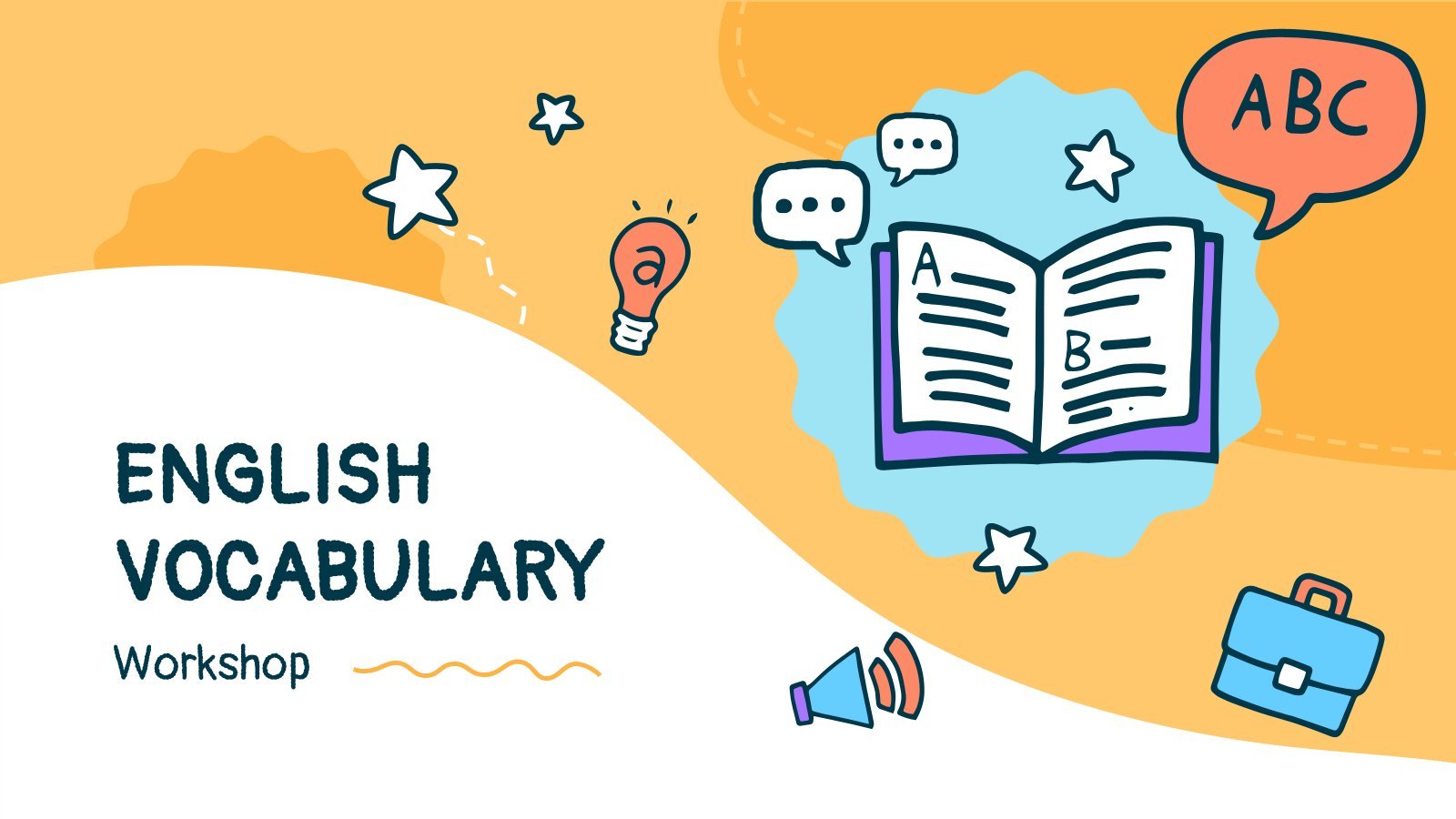
It seems that you like this template!
English vocabulary workshop.
Teaching new words to your students can be a very entertaining activity! Create a vocabulary workshop with this presentation adorned with doodles, wavy shapes and different hues of yellow. Review the objectives, methodology, analysis and conclusions using pie charts, maps or tables.

English Language Arts Thesis
Some abstract shapes on the background are always a nice touch. The ones you’ll see in this template are quite colorful, as well as the infographics and the resources included to help you explain your methodology, study, results and conclusion of your thesis on English Language Arts.

Premium template
Unlock this template and gain unlimited access
English Literature Class
Open your books and your mind, the class is about to begin! What is there to know about English literature? Well, everything! Sit and enjoy a lesson about the history of literature, the best works, the most famous writers or go into detail and learn what made them so special....

Classic English Novels
Ah, literature, what a beautiful art. Are you an expert on classic novels written by English authors? Go back to the past with this template and tell your audience all about these best sellers that made an impact. Let the vintage look of the slides set the right tone and...

Creative Writing - Bachelor of Arts in English
Download the "Creative Writing - Bachelor of Arts in English" presentation for PowerPoint or Google Slides. As university curricula increasingly incorporate digital tools and platforms, this template has been designed to integrate with presentation software, online learning management systems, or referencing software, enhancing the overall efficiency and effectiveness of student...

18th-Century Literature - Master of Arts in English
Download the "18th-Century Literature - Master of Arts in English" presentation for PowerPoint or Google Slides. As university curricula increasingly incorporate digital tools and platforms, this template has been designed to integrate with presentation software, online learning management systems, or referencing software, enhancing the overall efficiency and effectiveness of student...

English Verbs Conjugation Infographics
This is the ultimate template for English teachers! This set of infographics has all the resources you need so that your students master all 12 verb tenses. They are so easy to use that they will alleviate the TENSion of preparing the lessons, and your students will be PERFECT English...

Grammar Lesson
Noam Chomsky, the great linguist, once said that “language is a process of free creation” with fixed laws and principles, although one can use these laws freely. Learn and teach more about how grammar works with this vintage template!

Legal English Workshop
Is English legal? Or is it legal English? This play-on-words is not very good, unlike our new template for workshops! This design combines dark blue backgrounds with different geometric arrangements, which serve as decoration. It also uses a typography for titles that looks very unique—it's aim is to get your...

Language Arts Subject for Middle School - 7th Grade: Comprehension
Most people know how to read, but do they understand what they read? That's a different story! But don't worry, you are a teacher and you know what to do! Start customizing this new template for education and share the secrets of a good reading comprehension with your students. Well,...

English Modal Verbs Infographics
There is one thing you SHOULD try. It WILL help you prepare your lessons and CAN make the contents easier to understand. We are speaking about this set of infographic designs about English modal verbs! They are a MUST for English teachers and its creative and editable design WON’T let...
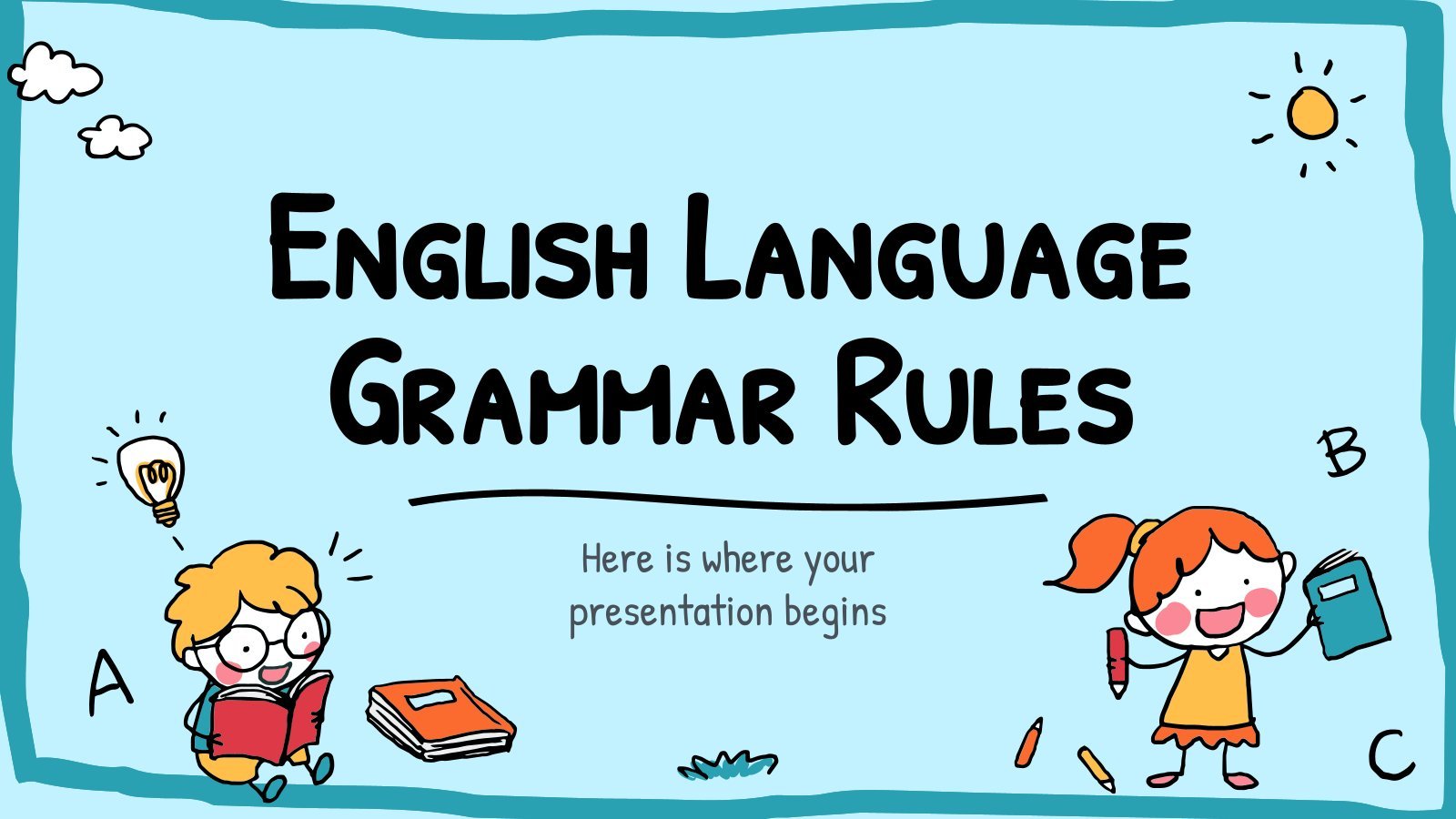
English Language Grammar Rules
The English language is spoken almost anywhere in the world, making it almost a necessity in everyone's education. Today, we're releasing this kid-friendly template with cute cartoony drawings of kids and many layouts prepared for you to teach some grammar rules. We've added some examples as a starting point. Use...

Language Arts Subject for High School - 9th Grade: Comparing Texts
Comparing texts and identifying their differences is a captivating exercise. Especially, if you teach your students how to do it with this elegant template. Novels, poems, autobiographies, descriptive texts… none of them will resist you after you practise the skills you’re going to learn with this presentation! It has lots...

Renaissance Literature - Master of Arts in English
Download the "Renaissance Literature - Master of Arts in English" presentation for PowerPoint or Google Slides. As university curricula increasingly incorporate digital tools and platforms, this template has been designed to integrate with presentation software, online learning management systems, or referencing software, enhancing the overall efficiency and effectiveness of student...

English Academy
Your academy fulfills a very important task: that of teaching English to the participants of the society of the future. It's time for you to give it a big boost and promotion using this fun illustrated template to talk about your teaching method, academic areas, teachers and the enrollment process...

Literary Criticism - Master of Arts in English
This elegantly designed template is a treasure for bibliophiles. Unveiling the path to mastering the fine art of literary criticism, this presentation will make your classes engaging and fascinating. It takes you on a journey of textual exploration, brought to life by beautifully floral illustrations sprinkled throughout the slides. From...

Victorian Literature - Master of Arts in English
Download the "Victorian Literature - Master of Arts in English" presentation for PowerPoint or Google Slides. As university curricula increasingly incorporate digital tools and platforms, this template has been designed to integrate with presentation software, online learning management systems, or referencing software, enhancing the overall efficiency and effectiveness of student...

Gender and Literature - Doctor of Philosophy (Ph.D.) in English
Download the "Gender and Literature - Doctor of Philosophy (Ph.D.) in English" presentation for PowerPoint or Google Slides. As university curricula increasingly incorporate digital tools and platforms, this template has been designed to integrate with presentation software, online learning management systems, or referencing software, enhancing the overall efficiency and effectiveness...
- Page 1 of 7
Great presentations, faster
Slidesgo for Google Slides :
The easy way to wow

Register for free and start editing online

Introducing Copilot+ PCs
May 20, 2024 | Yusuf Mehdi - Executive Vice President, Consumer Chief Marketing Officer
- Share on Facebook (opens new window)
- Share on Twitter (opens new window)
- Share on LinkedIn (opens new window)

An on-demand recording of our May 20 event is available .
Today, at a special event on our new Microsoft campus, we introduced the world to a new category of Windows PCs designed for AI, Copilot+ PCs.
Copilot+ PCs are the fastest, most intelligent Windows PCs ever built. With powerful new silicon capable of an incredible 40+ TOPS (trillion operations per second), all – day battery life and access to the most advanced AI models, Copilot+ PCs will enable you to do things you can’t on any other PC. Easily find and remember what you have seen in your PC with Recall, generate and refine AI images in near real-time directly on the device using Cocreator, and bridge language barriers with Live Captions, translating audio from 40+ languages into English .
These experiences come to life on a set of thin, light and beautiful devices from Microsoft Surface and our OEM partners Acer, ASUS, Dell, HP, Lenovo and Samsung, with pre-orders beginning today and availability starting on June 18. Starting at $999, Copilot+ PCs offer incredible value.
This first wave of Copilot+ PCs is just the beginning. Over the past year, we have seen an incredible pace of innovation of AI in the cloud with Copilot allowing us to do things that we never dreamed possible. Now, we begin a new chapter with AI innovation on the device. We have completely reimagined the entirety of the PC – from silicon to the operating system, the application layer to the cloud – with AI at the center, marking the most significant change to the Windows platform in decades.
YouTube Video
The fastest, most secure Windows PCs ever built
We introduced an all-new system architecture to bring the power of the CPU, GPU, and now a new high performance Neural Processing Unit (NPU) together. Connected to and enhanced by the large language models (LLMs) running in our Azure Cloud in concert with small language models (SLMs), Copilot+ PCs can now achieve a level of performance never seen before. They are up to 20x more powerful [1] and up to 100x as efficient [2] for running AI workloads and deliver industry-leading AI acceleration. They outperform Apple’s MacBook Air 15” by up to 58% in sustained multithreaded performance [3] , all while delivering all-day battery life. With incredible efficiency, Copilot+ PCs can deliver up to 22 hours of local video playback or 15 hours of web browsing on a single charge. [4] That is up to 20% more battery in local video playback than the MacBook Air 15”. [5]
Windows now has the best implementation of apps on the fastest chip, starting with Qualcomm. We now offer more native Arm64 experiences than ever before, including our fastest implementation of Microsoft 365 apps like Teams, PowerPoint, Outlook, Word, Excel, OneDrive and OneNote. Chrome, Spotify, Zoom, WhatsApp, Adobe Photoshop, Adobe Lightroom, Blender, Affinity Suite, DaVinci Resolve and many more now run natively on Arm to give you great performance with additional apps, like Slack, releasing later this year. In fact, 87% of the total app minutes people spend in apps today have native Arm versions. [6] With a powerful new emulator, Prism, your apps run great, whether native or emulated.
Every Copilot+ PC comes secured out of the box. The Microsoft Pluton Security processor will be enabled by default on all Copilot+ PCs and we have introduced a number of new features, updates and defaults to Windows 11 that make it easy for users to stay secure. And, we’ve built in personalized privacy controls to help you protect what’s important to you. You can read more about how we are making Windows more secure here .
Entirely new, powerful AI experiences
Copilot+ PCs leverage powerful processors and multiple state-of-the-art AI models, including several of Microsoft’s world-class SLMs, to unlock a new set of experiences you can run locally, directly on the device. This removes previous limitations on things like latency, cost and even privacy to help you be more productive, creative and communicate more effectively.
Recall instantly
We set out to solve one of the most frustrating problems we encounter daily – finding something we know we have seen before on our PC. Today, we must remember what file folder it was stored in, what website it was on, or scroll through hundreds of emails trying to find it.
Now with Recall, you can access virtually what you have seen or done on your PC in a way that feels like having photographic memory. Copilot+ PCs organize information like we do – based on relationships and associations unique to each of our individual experiences. This helps you remember things you may have forgotten so you can find what you’re looking for quickly and intuitively by simply using the cues you remember. [7]
You can scroll across time to find the content you need in your timeline across any application, website, document, or more. Interact intuitively using snapshots with screenray to help you take the next step using suggested actions based on object recognition. And get back to where you were, whether to a specific email in Outlook or the right chat in Teams.
Recall leverages your personal semantic index, built and stored entirely on your device. Your snapshots are yours; they stay locally on your PC. You can delete individual snapshots, adjust and delete ranges of time in Settings, or pause at any point right from the icon in the System Tray on your Taskbar. You can also filter apps and websites from ever being saved. You are always in control with privacy you can trust.
Cocreate with AI-powered image creation and editing, built into Windows
Since the launch of Image Creator, almost 10 billion images have been generated, helping more people bring their ideas to life easily by using natural language to describe what they want to create. Yet, today’s cloud offerings may limit the number of images you can create, keep you waiting while the artwork processes or even present privacy concerns. By using the Neural Processing Units (NPUs) and powerful local small language models, we are bringing innovative new experiences to your favorite creative applications like Paint and Photos.
Combine your ink strokes with text prompts to generate new images in nearly real time with Cocreator. As you iterate, so does the artwork, helping you more easily refine, edit and evolve your ideas. Powerful diffusion-based algorithms optimize for the highest quality output over minimum steps to make it feel like you are creating alongside AI. Use the creativity slider to choose from a range of artwork from more literal to more expressive. Once you select your artwork, you can continue iterating on top of it, helping you express your ideas, regardless of your creative skills.
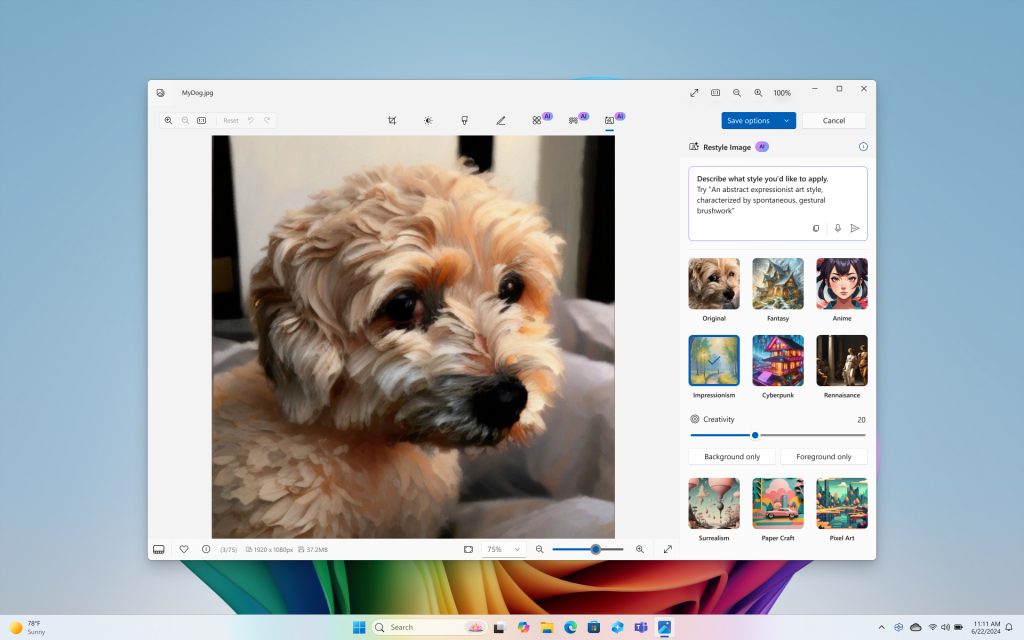
Take photo editing and image creation to the next level. With Restyle Image, you can reimagine your personal photos with a new style combining image generation and photo editing in Photos. Use a pre-set style like Cyberpunk or Claymation to change the background, foreground or full picture to create an entirely new image. Or jumpstart your next creative project and get visual inspiration with Image Creator in Photos. On Copilot+ PCs you can generate endless images for free, fast, with the ability to fine tune images to your liking and to save your favorites to collections.
Innovative AI experiences from the creative apps you love
We are also partnering with some of the biggest and most-loved applications on the planet to leverage the power of the NPU to deliver new innovative AI experiences.
Together with Adobe, we are thrilled to announce Adobe’s flagship apps are coming to Copilot+ PCs, including Photoshop, Lightroom and Express – available today. Illustrator, Premiere Pro and more are coming this summer. And we’re continuing to partner to optimize AI in these apps for the NPU. For Adobe Creative Cloud customers, they will benefit from the full performance advantages of Copilot+ PCs to express their creativity faster than ever before.
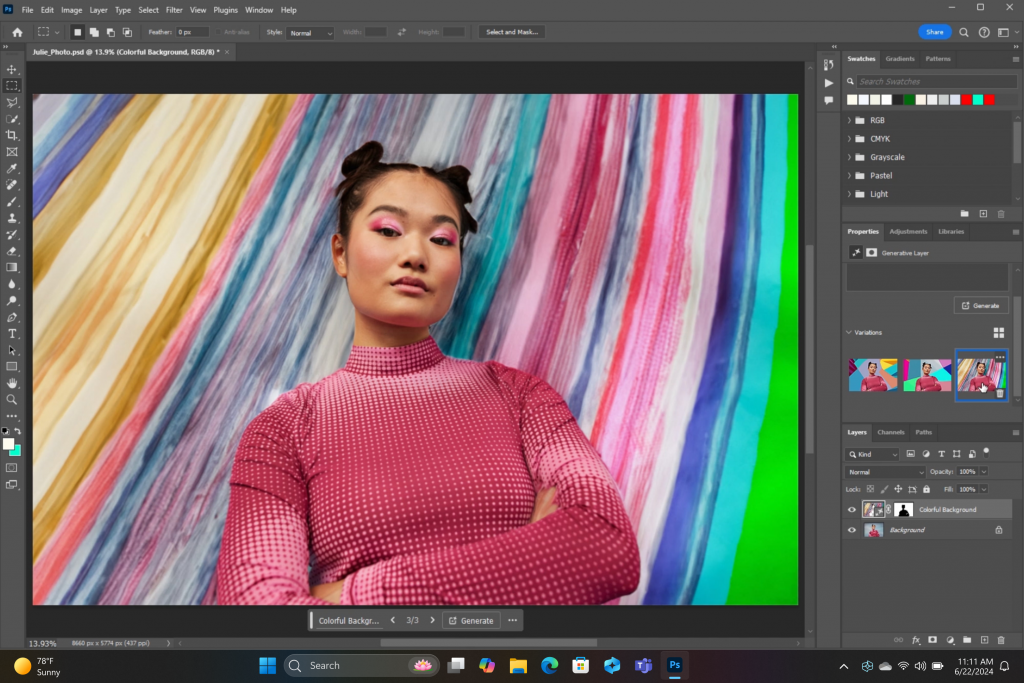
DaVinci Resolve Studio
Effortlessly apply visual effects to objects and people using NPU-accelerated Magic Mask in DaVinci Resolve Studio.
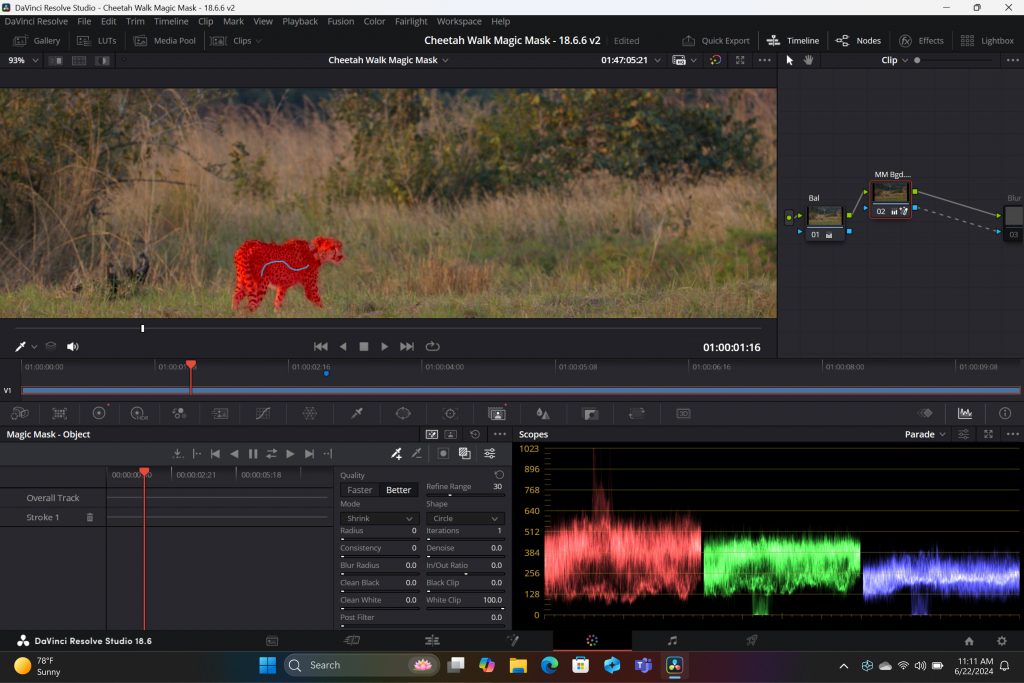
Remove the background from any video clip in a snap using Auto Cutout running on the NPU in CapCut.

Stay in your flow with faster, more responsive adaptive input controls, like head movement or facial expressions via the new NPU-powered camera pipeline in Cephable.
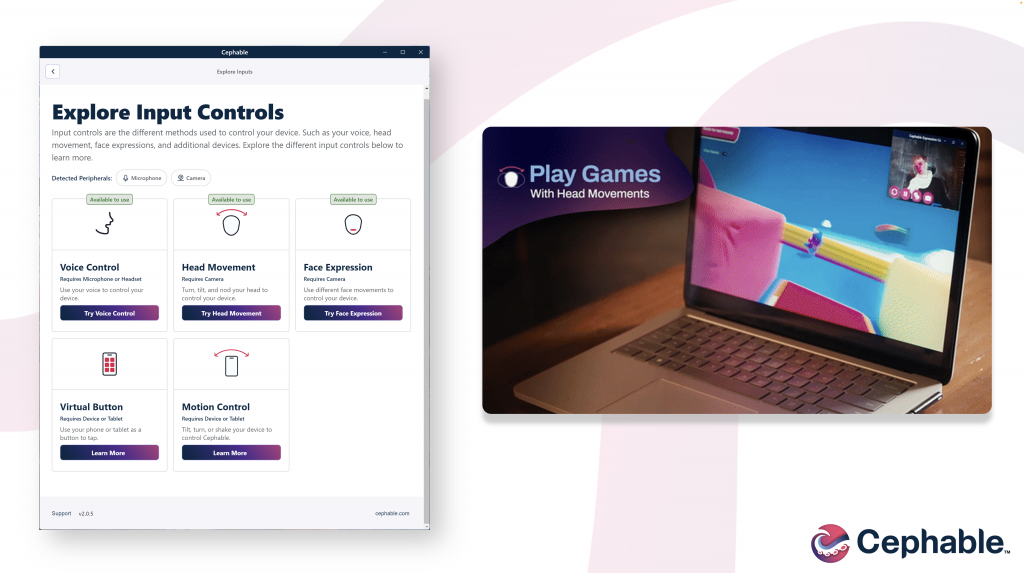
LiquidText
Make quicker and smarter annotations to documents, using AI features that run entirely on-device via NPU, so data stays private in LiquidText.
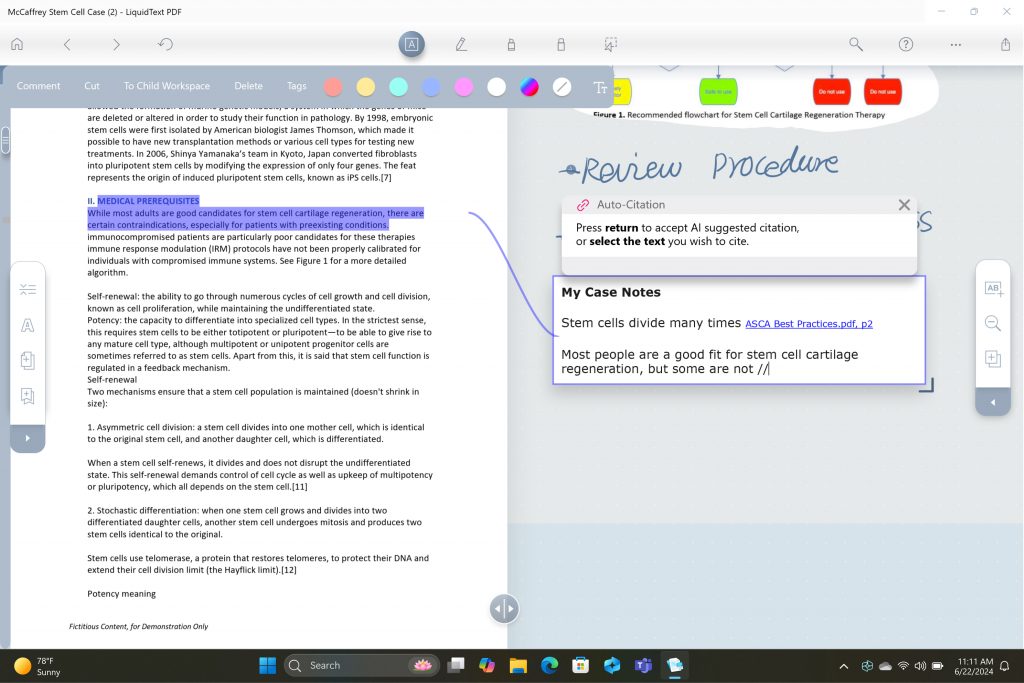
Have fun breaking down and remixing any music track, with a new, higher-quality version of NeuralMix™ that’s exclusive to NPU in Algoriddim’s djay Pro.
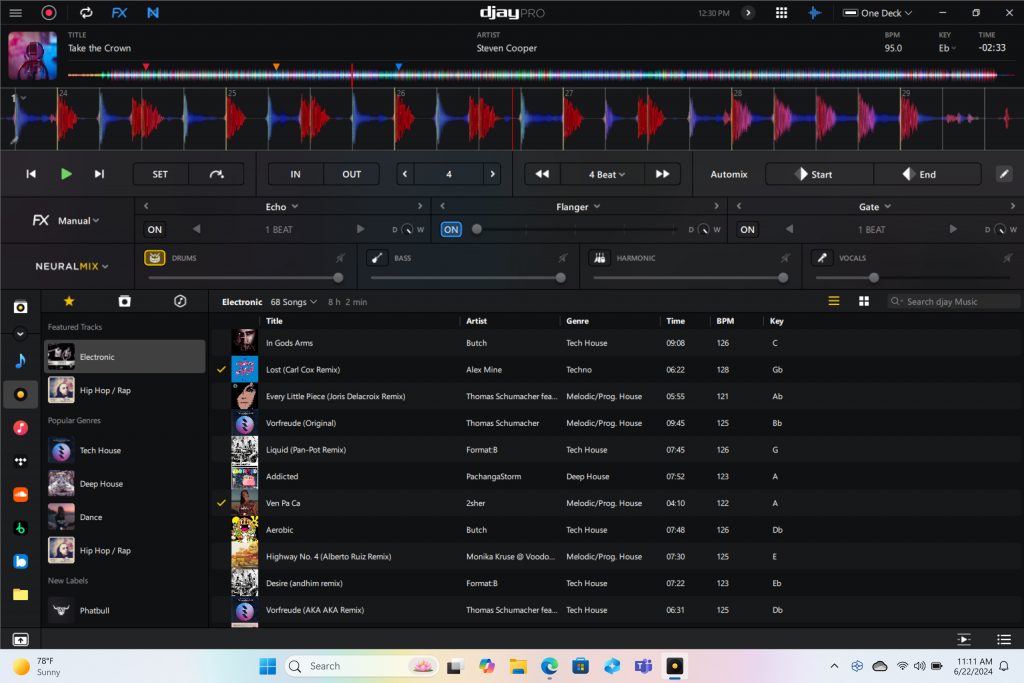
Connect and communicate effortlessly with live captions
In an increasingly connected and global world, Windows wants to bring people closer together. Whether catching up on your favorite podcast from a different country, or watching your favorite international sports team, or even collaborating with friends and colleagues across the world, we want to make more content accessible to more people.
Live Captions now has live translations and will turn any audio that passes through your PC into a single, English-language caption experience, in real time on your screen across all your apps consistently. You can translate any live or pre-recorded audio in any app or video platform from over 40 languages into English subtitles instantly, automatically and even while you’re offline. Powered by the NPU and available across all Copilot+ PCs, now you can have confidence your words are understood as intended.
New and enhanced Windows Studio Effects
Look and sound your best automatically with easily accessible controls at your fingertips in Quick Settings. Portrait light automatically adjusts the image to improve your perceived illumination in a dark environment or brighten the foreground pixels when in a low-light environment. Three new creative filters (illustrated, animated or watercolor) add an artistic flare. Eye contact teleprompter helps you maintain eye contact while reading your screen. New improvements to voice focus and portrait blur help ensure you’re always in focus.
Copilot, your everyday AI companion

Every Copilot+ PC comes with your personal powerful AI agent that is just a single tap away on keyboards with the new Copilot key. [8] Copilot will now have the full application experience customers have been asking for in a streamlined, simple yet powerful and personal design. Copilot puts the most advanced AI models at your fingertips. In the coming weeks, get access to the latest models including GPT-4o from our partners at OpenAI, so you can have voice conversations that feel more natural.
Advancing AI responsibly
At Microsoft, we have a company-wide commitment to develop ethical, safe and secure AI. Our responsible AI principles guided the development of these new experiences, and all AI features are aligned with our standards. Learn more here .
New Copilot+ PCs from Microsoft Surface and our partners
We have worked with each of the top OEMs — Acer, ASUS, Dell, HP, Lenovo, Samsung — and of course Surface, to bring exciting new Copilot+ PCs that will begin to launch on June 18. Starting at $999, these devices are up to $200 less than similar spec’d devices [9] .
Surface plays a key role in the Windows ecosystem, as we design software and hardware together to deliver innovative designs and meaningful experiences to our customers and fans. We are introducing the first-ever Copilot+ PCs from Surface: The all-new Surface Pro and Surface Laptop.
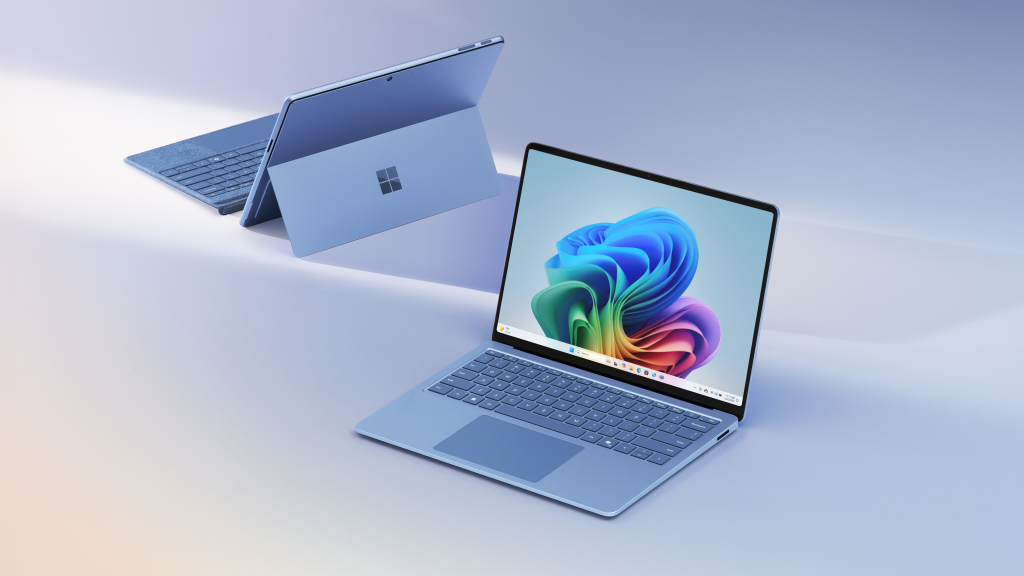
The new Surface Laptop is a powerhouse in an updated, modern laptop design with razor-thin bezels, a brilliant touchscreen display, AI-enhanced camera, premium audio, and now with a haptic touchpad.
Choose between a 13.8” and 15” display and four stunning colors. Enjoy up to 22 hours of local video playback on Surface Laptop 15” or up to 20 hours on Surface Laptop13.8” on top of incredible performance and all-new AI experiences.
The new Surface Pro is the most flexible 2-in-1 laptop, now reimagined with more speed and battery life to power all-new AI experiences. It introduces a new, optional OLED with HDR display, and ultrawide field of view camera perfect for Windows Studio Effects. The new Surface Pro Flex Keyboard is the first 2-in-1 keyboard designed to be used both attached or detached. It delivers enhanced stability, with Surface Slim Pen storage and charging integrated seamlessly, as well as a quiet, haptic touchpad. Learn more here.
New Copilot+ PCs from the biggest brands available starting June 18:
- Acer : Acer’s Swift 14 AI 2.5K touchscreen enables you to draw and edit your vision with greater accuracy and with color-accurate imagery. Launch and discover AI-enhanced features, like Acer PurifiedVoice 2.0 and Purified View, with a touch of the dedicated AcerSense button.
- ASUS : The ASUS Vivobook S 15 is a powerful device that brings AI experiences to life with its Snapdragon X Elite Platform and built-in Qualcomm® AI. It boasts 40+ NPU TOPS, a dual-fan cooling system, and up to 1 TB of storage. Next-gen AI enhancements include Windows Studio effects v2 and ASUS AiSense camera, with presence-detection capabilities for Adaptive Dimming and Lock. Built for portability, it has an ultra-slim and light all-metal design, a high-capacity battery, and premium styling with a single-zone RGB backlit keyboard.
- Dell : Dell is launching five new Copilot+ PCs, including the XPS 13, Inspiron 14 Plus, Inspiron 14, Latitude 7455, and Latitude 5455, offering a range of consumer and commercial options that deliver groundbreaking battery life and unique AI experiences. The XPS 13 is powered by Snapdragon X Elite processors and features a premium, futuristic design, while the Latitude 7455 boasts a stunning QHD+ display and quad speakers with AI noise reduction. The Inspiron14 and Inspiron 14 Plus feature a Snapdragon X Plus 1and are crafted with lightweight, low carbon aluminum and are energy efficient with EPEAT Gold rating.
- HP : HP’s OmniBook X AI PC and HP EliteBook Ultra G1q AI PC with Snapdragon X Elite are slim and sleek designs, delivering advanced performance and mobility for a more personalized computing experience. Features include long-lasting battery life and AI-powered productivity tools, such as real-time transcription and meeting summaries. A 5MP camera with automatic framing and eye focus is supported by Poly Studio’s crystal-clear audio for enhanced virtual interactions.
- Lenovo : Lenovo is launching two AI PCs: one built for consumers, Yoga Slim 7x, and one for commercial, ThinkPad T14s Gen 6. The Yoga Slim 7x brings efficiency for creatives, featuring a 14.5” touchscreen with 3K Dolby Vision and optimized power for 3D rendering and video editing. The T14s Gen 6 brings enterprise-level experiences and AI performance to your work tasks, with features including a webcam privacy shutter, Wi-Fi 7 connectivity and up to 64GB RAM.
- Samsung : Samsung’s new Galaxy Book4 Edge is ultra-thin and light, with a 3K resolution 2x AMOLED display and Wi-Fi 7 connectivity. It has a long-lasting battery that provides up to 22 hours of video playback, making it perfect for work or entertainment on the go.
Learn more about new Copilot+ PCs and pre-order today at Microsoft.com and from major PC manufacturers, as well as other leading global retailers.
Start testing for commercial deployment today
Copilot+ PCs offer businesses the most performant Windows 11 devices with unique AI capabilities to unlock productivity, improve collaboration and drive efficiency. As a Windows PC, businesses can deploy and manage a Copilot+ PC with the same tools and processes used today including IT controls for new features and AppAssure support. We recommend IT admins begin testing and readying for deployment to start empowering your workforce with access to powerful AI features on these high-performance devices. You can read more about our commercial experiences here .

AI innovation across the Windows ecosystem
Like we’ve always done with Windows, we have built a platform for our ecosystem partners to build on.
The first Copilot+ PCs will launch with both the Snapdragon® X Elite and Snapdragon® X Plus processors and feature leading performance per watt thanks to the custom Qualcomm Oryon™ CPU, which delivers unrivaled performance and battery efficiency. Snapdragon X Series delivers 45 NPU TOPS all-in-one system on a chip (SoC). The premium integrated Qualcomm® Adreno ™ GPU delivers stunning graphics for immersive entertainment. We look forward to expanding through deep partnerships with Intel and AMD, starting with Lunar Lake and Strix Point. We will bring new Copilot+ PC experiences at a later date. In the future we expect to see devices with this silicon paired with powerful graphics cards like NVIDIA GeForce RTX and AMD Radeon™, bringing Copilot+ PC experiences to reach even broader audiences like advanced gamers and creators.
We are at an inflection point where the PC will accelerate AI innovation. We believe the richest AI experiences will only be possible when the cloud and device work together in concert. Together with our partners, we’re setting the frame for the next decade of Windows innovation.
[1] Based on snapshot of aggregated, non-gaming app usage data as of April 2024 for iGPU-based laptops and 2-in-1 devices running Windows 10 and Windows 11 in US, UK, CA, FR, AU, DE, JP.
[2] Tested April 2024 using Phi SLM workload running 512-token prompt processing in a loop with default settings comparing pre-release Copilot+ PC builds with Snapdragon Elite X 12 Core and Snapdragon X Plus 10 core configurations (QNN build) to Windows 11 PC with NVIDIA 4080 GPU configuration (CUDA build).
[3] Tested May 2024 using Cinebench 2024 Multi-Core benchmark comparing Copilot+ PCs with Snapdragon X Elite 12 core and Snapdragon X Plus 10 core configurations to MacBook Air 15” with M3 8 core CPU / 10 Core GPU configuration. Performance will vary significantly between device configuration and usage.
[4] *Battery life varies significantly by device and with settings, usage and other factors. See aka.ms/cpclaims*
[5] *Battery life varies significantly based on device configuration, usage, network and feature configuration, signal strength, settings and other factors. Testing conducted May 2024 using the prelease Windows ADK full screen local video playback assessment under standard testing conditions, with the device connected to Wi-Fi and screen brightness set to 150 nits, comparing Copilot+ PCs with Snapdragon X Elite 12 core and Snapdragon X Plus 10 core configurations running Windows Version 26097.5003 (24H2) to MacBook Air 15” M3 8-Core CPU/ 10 Core GPU running macOS 14.4 with similar device configurations and testing scenario.
[6] Based on snapshot of aggregated, non-gaming app usage data as of April 2024 for iGPU-based laptops and 2-in-1 devices running Windows 10 and Windows 11 in US, UK, CA, FR, AU, DE, JP.
[7] Recall is optimized for select languages (English, Chinese (simplified), French, German, Japanese, and Spanish.) Content-based and storage limitations apply. Learn more here .
[8] Copilot key functionality may vary. See aka.ms/keysupport
[9] Based on MSRPs; actual savings may vary
Tags: AI , Copilot+ PC
- Check us out on RSS

- Topic Specification
SLC: Key SLC Skills Revision
Revision products, functional skills english level 2 practice papers, functional skills english level 2 pocket revision guide, functional skills english level 2 revision cards, filter by level, filter by exam board, slc: key slc skills.
To ace your exam, think about how you can use all of the SLC knowledge you now have, to achieve maximum marks!
Remember that you will be assessed on all three areas:
Speaking , Listening and Communicating
Read the page below for some functional skills english level 2 speaking and listening examples to help you with your exam!
Pass your level 2 English exam on the first attempt!
Understanding what topics you need to revise is essential. Our subject knowledge assessment assessment tests your knowledge on key topic areas and suggests what you need to revise.
In a Nutshell
You will need to do each of these in order to tick the boxes (literally!):
- Respond with detailed and thoughtful answers to questions
- Ask relevant questions
- Follow narratives
- Extract key information from others
- Use appropriate language for the context
- Communicate effectively
- Use evidence to support answers
- Make strong contributions
- Adapt to different styles
Follow Our Socials

Follow our Facebook for community support

Follow our Instagram & TikTok for revision help
Our Facebook page can put you in touch with other students of your course for revision and community support. Alternatively, you can find us on Instagram or TikTok where we're always sharing revision tips for all our courses.
Follow our socials for revision tips and community support
1. Speak clearly and confidently when delivering your presentation
others can hear and understand you correctly.
2. Also, make sure you have a structure when presenting.
if other learners and the assessor fail to understand your presentation, it means you do not meet the criteria for communicating ideas effectively .
3. Lastly, try not to repeat content.
This will weaken your arguments and make it less likely that you will present a balance of opinions .

- You are allowed to have notes , but make sure you are not reading off a script , as this is more about your S L C , not reading skills!
- Make these notes in the order you will present them, so it is easier to follow and so that your presentation has structure.
You must also ensure you are listening to other presentations thoroughly.
This is because you will need to:
1. Ask questions during the Q+A
2. Talk through each presentation during the discussion task
Note down key points from other presentations so that you are able to generate questions – the more detail the better!
Communicating
During the discussion task especially , it is crucial you can show strong communication skills.
This may include:
1. Making constructive contributions
= Do this so you can move the discussion forward. Being constructive includes exploring all ideas and even proposing suggestions on how to improve.
2. Interjecting or redirecting discussions appropriately
= Don’t interrupt others even if you are too excited to share! Also make sure you voice your own thoughts instead of relying on others to ask!
3. Using the correct language and register
= Use appropriate language to the context.
Could you pass your functional skills English level 2?
Wondering if you are ready to pass your functional skills English level 2? Why not take a subject knowledge assessment test and see if you are ready to pass. Anything around 60% would be a pass.
Example: SLC
What is wrong with the following response?
“I think my idea is the best because I know my idea is the best and it should be chosen.”
Although it may have been ‘the best’, the speaker has come to a concrete decision before exploring the other ideas .
This would mean that the assessment requirements of making relevant and constructive contributions would not be met.
As a result, the student would be unlikely to pass the exam.
Additional Resources
Exam tips cheat sheet, how to pass your level 2 slc, how to pass your level 1 slc.
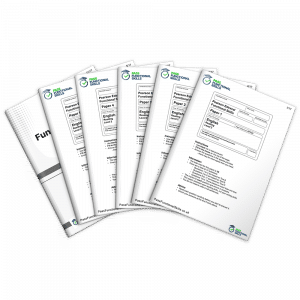
This comprehensive set of 10 Functional Skills English Level 2 Practice Papers (5 reading papers + 5 writing) is a great way to revise for your upcoming reading and writing exams. These papers have been specifically tailored to match the structure, format and question types used by each of the main exam boards for functional skills English.
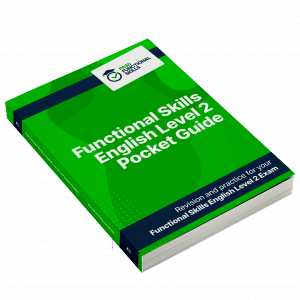
Revise and practice for your functional skills English level 2 exam. All topics covered in this compact revision guide.
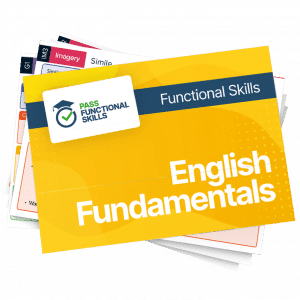
Revise for functional skills English level 2, with these English level 2 fundamentals revision cards. Covering the building blocks of the essential areas of the level 2 exam.
Speak to one of our experts now
Our Functional Skills Experts are on hand to answer any queries you may have.
By clicking continue and using our website you are consenting to our use of cookies in accordance with our Cookie Policy
Functional Skills English Level 2 Subject Knowledge Assessment
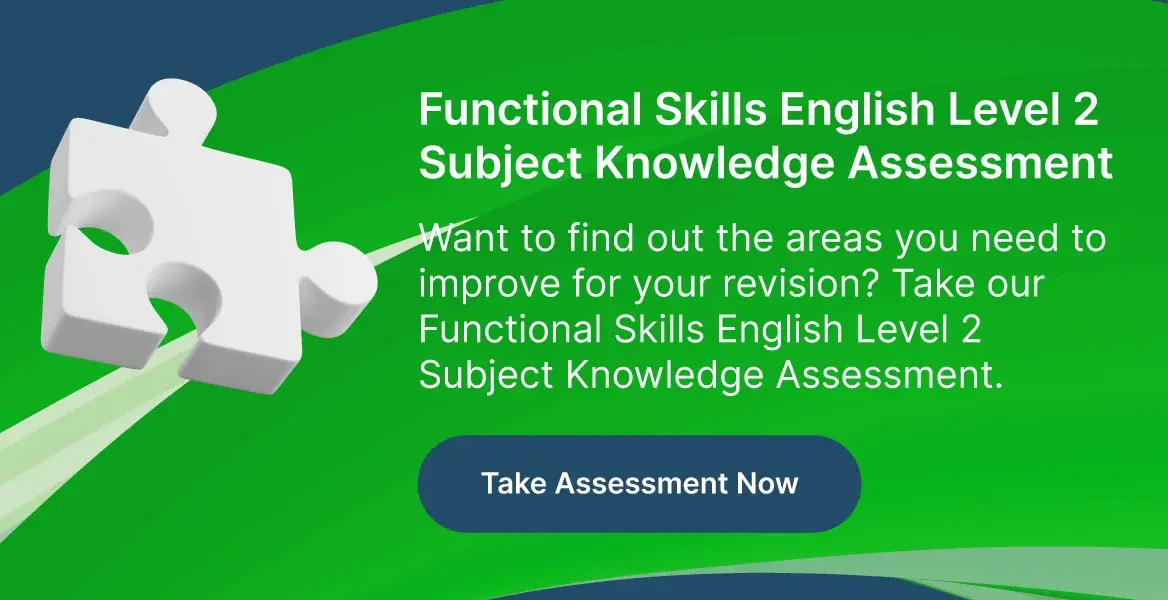

IMAGES
VIDEO
COMMENTS
Consider complex information and give a relevant, cogent response in appropriate language. Level 2. Make a range of contributions to discussions in a range of contexts, including those that are unfamiliar, and make effective presentations. Present information and ideas clearly and persuasively to others.
Speaking, Listening & Communication Level 2 presentation - Keiran
Speaking, Listening & Communication Level 2 presentation - Lumbe
Level 2: SLC Exam. The exam is comprised of a: Presentation. Q+A. Discussion. Prior to the exam, you will given the instructions and topic for your presentation and the discussion. Then, the Q+A will start straight after your presentation. After each learner finishes their presentation and Q+A, there will be break to gather information from ...
This is a dedicated page for functional skills English level 2 revision materials, including functional skills reading level 2 resources, practice tests, worksheets, and other exercises, all designed to help you excel in your level 2 English exam. We even have a functional skills English 'writing a report' task to help you prepare for your exam.
Personal online tutoring. EnglishScore Tutors is the British Council's one-to-one tutoring platform for 13- to 17-year-olds. Giving an oral presentation as part of a speaking exam can be quite scary, but we're here to help you. Watch two students giving presentations and then read the tips carefully.
Creating a presentation. Submitted by Sanchia Hylton-Smith on 7 April 2011. Excellent advice on giving a presentation (this is a required part of Level 2 Functional English assessment and would also be useful for L2 literacy and possibly L2 ESOL ). Step by step guide to planning and delivery.
Functional English - speaking, listening & communicating. Updated May 26 (new images & formatting): A PPT session that introduces learners to the Level 1 and 2 Functional Skills SL&C assessments and provides some small group tasks and brainstorms. Aimed at adult learners and linked to employability. Editor's note Easily adapted for any Awarding ...
Presentations normally have one or more of the following aims: To inform/ raise awareness of an important issue. To persuade people to do something. Form part of an exam, demonstrating public speaking/presentation skills in a first or second language. I set students a task where they answer these questions:
Important advice: Limit the number of main points in your presentation from 3 to 5 (no more than 5!). You want your audience to be well-informed but not overwhelmed. Strategy 4: Show, Don't Tell. In English, we love stories and pictures to help us remember information.
Level 2 English - Speaking, Listening and Communicating. 1. Identify relevant information from extended explanations or presentations. 2. Follow narratives and lines of argument. 3. Respond effectively to detailed or extended questions and feedback. 4.
LEVEL 2 FUNCTIONAL SKILLS QUALIFICATION IN ENGLISH: SPEAKING, LISTENING AND COMMUNICATING Sample Assessment Task: Observation and Reporting Learners need: paper and pen/pencil to make notes any visual aids they wish to use in their presentation This assessment task must be kept secure until the assessment is scheduled to take place.
A report is a factual text that gives information about a situation. Often the situation is problematic and the information in the report is intended to help solve the problem. For example, an accident report for the police is an account of what a witness saw. The information in the accident report helps the police to establish the truth about ...
The general structure of a presentation is the following: It is up to you to design these three parts. Using videos or everyday-examples can be a great way to introduce the audience to the topic. The important thing is that you capture the audience's attention from the beginning by making an interesting introduction.
Two PowerPoint resources for discussion that can feed into Level 1 or 2 Functional Skills for English, Speaking & Listening. Editor's note Also covers research, reading and writing. Great for prompting discussion among 14-19 year olds. ... (activity 2 - presentation). I trialled it with my learners as a 'practise' presentation before ...
This comprehensive set of 10 Functional Skills English Level 2 Practice Papers (5 reading papers + 5 writing) is a great way to revise for your upcoming reading and writing exams. These papers have been specifically tailored to match the structure, format and question types used by each of the main exam boards for functional skills English. ...
Activity 2 - Presentation. The candidate will need to prepare a presentation on a familiar topic. Candidates will need to demonstrate the following skills in their presentation: . presenting information and ideas clearly presenting information and ideas persuasively to others. Candidates should be informed that their presentation is to be ...
The purpose of the Functional Skills English Level 2 qualification is to prepare the learner for work, study and life. Learners who achieve this qualification will demonstrate the ability to read, write, speak, listen and communicate in English. Learners will be able to apply these skills effectively to a range of purposes in the workplace and ...
Level 2 Speaking, Listening and Communicating Assessment Record Sheet Evidence sheet for Activity 3 Discussion in response to another person's presentation or extended explanation, or a recorded presentation Content Statement Evidence of achievement SCS1. Identified relevant information from extended explanations or presentations SCS2.
Revise for functional skills English level 2, with these English level 2 fundamentals revision cards. Covering the building blocks of the essential areas of the level 2 exam. £ 11.99 £ 8.99. View Product. Writing: Form, Presentational Language and Features revision and questions for functional skills English.
Download the "Gender and Literature - Doctor of Philosophy (Ph.D.) in English" presentation for PowerPoint or Google Slides. As university curricula increasingly incorporate digital tools and platforms, this template has been designed to integrate with presentation software, online learning management systems, or referencing software, enhancing ...
Based on snapshot of aggregated, non-gaming app usage data as of April 2024 for iGPU-based laptops and 2-in-1 devices running Windows 10 and Windows 11 in US, UK, CA, FR, AU, DE, JP. Recall is optimized for select languages (English, Chinese (simplified), French, German, Japanese, and Spanish.) Content-based and storage limitations apply.
2.Talk through each presentation during the discussion task . ... This comprehensive set of 10 Functional Skills English Level 2 Practice Papers (5 reading papers + 5 writing) is a great way to revise for your upcoming reading and writing exams. These papers have been specifically tailored to match the structure, format and question types used ...